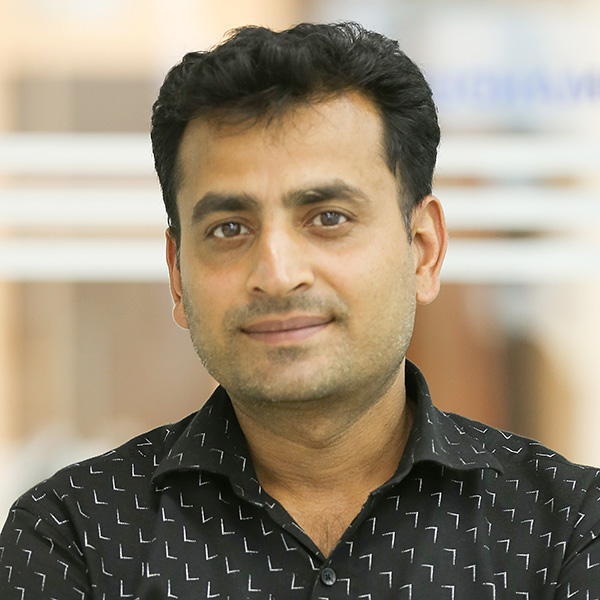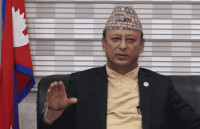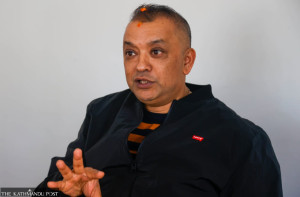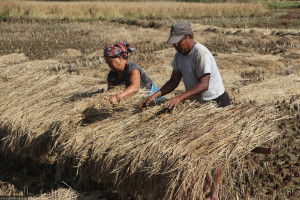Valley
Thousands of patients bear the brunt of government doctors’ strike
When Purna Lama reached Kanti Children’s Hospital on Wednesday morning, his two-year-old daughter was running a high fever. He was at his wit’s end when he found out there was no service available because the doctors were on a strike. There were scores of people like Lama, confused and angry, at the country’s premium children hospital run by the government.
Arjun Poudel
When Purna Lama reached Kanti Children’s Hospital on Wednesday morning, his two-year-old daughter was running a high fever. He was at his wit’s end when he found out there was no service available because the doctors were on a strike. There were scores of people like Lama, confused and angry, at the country’s premium children hospital run by the government.
“I am not sure where I should go now,” said Lama, from Dhading district.
Kanti is one of the government hospitals across the country where services, except emergency services, are currently being halted due to a protest by around 1,400 government doctors who have been demanding an amendment be made to the employee adjustment bill, a provision which they say hampers their career prospects.
The doctors’ protest means services are not available at primary health care centres, district hospitals, zonal hospitals and regional hospitals—all of which are the backbone of the country’s healthcare system and provide a majority of patients across the country treatment at rates cheaper than private hospitals and nursing homes.

Nabin Tamang of Dhading sits stranded on the premises of Bir Hospital Trauma Centre in Kathmandu on Wednesday. Post Photo: Anish Regmi
The recently endorsed employee adjustment bill has clubbed government doctors together with civil servants, and after the adjustment process, a majority of them will be working under local governments. But government doctors have been demanding that they should be allowed to work directly under the federal government.
Because of the protests, services at tertiary health care facilities like Bir Hospital and Paropakar Maternity Hospital in Kathmandu have also been affected.
Ramchandra Das, 65, from Sabela of Dhanusha district, is one such patient who is already suffering because of the strike. He had a follow-up at Bir Hospital for his prostate problem today.
“I waited for hours in front of the ticket counter before I learnt my doctor was no available because there was a strike,” Das told the Post. “I now have no option than to return home in the middle of the treatment as I am told the strike might continue for days,” he said. “I cannot afford treatment in private hospitals.”
Das and his wife Chauras Devi have been staying at a guest house run by the Pashupati Area Development Trust for the past week.
Even though medical care has been categorised under essential services, which means these services should not be halted in any way, doctors in the country often tend to resort to this form of protest, affecting hundreds of thousands of patients.
Consumer rights activists said the government doctors’ strike was objectionable.
“We will lodge a case with police against the protesting doctors for depriving thousands of patients of their right to health care services,” said Jyoti Baniya, chairman of the Forum for Protection of Consumer Rights-Nepal. “The government has designated health care as an essential service sector and prohibited strike in health facilities.”
The Government Doctors Association of Nepal, an umbrella organisation of government doctors, said that boycotting services was a compulsion and not a choice.
“We were forced to resort to this form of protest after the Ministry of Health did not pay heed to our concerns,” said Dr Dipendra Pandey, chairman of the association.
The Health Ministry says though it understands the concerns of the agitating doctors, there is nothing it can do as the bill has already been endorsed.
“The only way to address government doctors’ concerns is an amendment, which is completely in the Parliament’s jurisdiction,” said Mahendra Prasad Shrestha, chief of the Health Coordination Division at the Ministry of Health.
But government doctors say the Health Ministry should take the lead in addressing their problems.
Amidst all this, people like Lama—and his daughter—are bearing the brunt. “I used to believe doctors understood the poor people’s problems,” said Lama, as he prepared to take his daughter to a private health facility. “But I was wrong.”




 15.12°C Kathmandu
15.12°C Kathmandu













